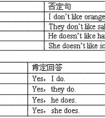There _______ a football match tomorrow. [ ]A. is going toB. is going to be C. are going to have D. will have -八年级英语
题文
| There _______ a football match tomorrow. |
|
[ ] |
| A. is going to B. is going to be C. are going to have D. will have |
答案
| B |
据专家权威分析,试题“There _______ a football match tomorrow. [ ]A. is going to..”主要考查你对 实义动词,there be 句型 等考点的理解。关于这些考点的“档案”如下:
实义动词there be 句型
考点名称:实义动词
- 实意动词:
即行为动词,表示动作的动词。实义动词与系动词是相对的,能独立用作谓语。
它分为及物动词和不及物动词两种:
及物动词是指后面要求有直接宾语的动词;
不及物动词指后面不需要跟宾语的动词。 实意动词使用方法:
及物动词
后面必须跟宾语意义才完整的实义动词,叫做及物动词(transitive verb)。如:
I believe that the committee will consider our suggestion.我相信委员会将会考虑我们的建议。
“How long can I keep the book ?”Harry asked.哈里问:“这本书我可以借多久?”
Dr. Bethune set us a good example. 白求恩大夫给我们树立了好榜样。
Crude oil contains many useful substances.原油含有许多有用的物质。
不及物动词
本身意义完整后面不须跟宾语的实义动词,叫做不及物动词(intransitive verb)。如:
Birds fly.鸟会飞。
It happened in June 1932.这件事发生于一九三二年六月。
My watch stopped.我的表停了。
She spoke at the meeting yesterday evening. 她在昨天晚上的会上发了言。
兼作及物动词和不及物动词
英语里有不少实义动词可以兼作及物动词和不及物动词。这样的动词又有两种不同的情况
a)兼作及物动词和不及物动词时,意义不变。试比较:
Shall I begin at once?我可以立刻开始吗?(begin作不及物动词)
She began working as a librarian after she left school.她毕业后当图书馆管理员。(began作及物动词)
When did they leave Chicago?他们是什么时候离开芝加哥的?(leave 作及物动词)
They left last week. 他们是上周离开的。(left 作不及物动词)
b)兼作及物动词和不及物动词时,有时意义不尽相同。如:
Wash your hands before meals.饭前要洗手。
Does this cloth wash well? 这布经得起洗吗?- 英汉实意动词用法比较:
与汉语的比较,有时英语动词的及物和不及物的用法,与汉语的用法不一样,请注意下列两种情况:
a)有的动词在英语里只能用作不及物动词,而汉语则可用作及物动词,如arrive到达,agree同意,listen听。英语里这些动词后面常接介词。如:
We arrived at the railway station at noon.
我们于中午到达火车站。(at不能省去)
(比较:We reached the railway station at noon.)
Everybody listened to the lecture with great interest.
每个人都很有兴趣地听讲课。(to不可省去)
(比较:We all heard the lecture.)
Do they agree to the plan?他们同意这个计划吗?(to不可省去)
b)有的动词在英语里能用作及物动词,而在汉语里则不能用作及物动词,如serve为…服务。
Our children are taught to serve the people wholeheartedly.
我们的儿童被教以全心全意为人民服务
用于be动词之后,实义动词之前。 实意动词的用法:
肯定句:
主语+动词过去式+其它
否定句:
主语+助动词didn‘t+动词原型+其他
一般过去式:
Did+主语+动词原型+其他
考点名称:there be 句型
There be句型:
是一常见的表示“存在”的句型。该结构不表示“存在”意义的现象又广见于书面语及口语,它以否定句的形式出现,用于对某一具体行为和抽象概念的否定。
There在此结构中是引导词,已经没有副词“那里”的含义。
There be 后面的名词是句子的主语,属倒装结构;
1.There be 句型的否定句有两种构成方式,一种是将否定副词not放在be 之后,如:
There isn’t a box in the room.房间里没有盒子。
There aren’t any pens on the desk.课桌上没有钢笔。
There hasn’t been any rain for a week.一周没下雨了。
There won’t be a meeting today.今天没有会议。
另一种是在主语前加上不定代词no , 如:
There is no water in the bottle.瓶子里没有水。
There are no pictures on the wall.墙上没有图画。
There will be no one at home tomorrow morning.明天上午不会有人在家。
There might be no money left。或许没有剩下什么钱。
2.There be 句型的一般疑问句是将be 放在there 之前,回答时用yes或no,后接简单答语。如:
Is there a cake on the table?桌子上有块蛋糕吗?
Yes,there is. / No,there isn’t.是,有。/ 不,没有。
Will there be a party tonight?今晚有聚会吗?
Yes,there will./ No, there won’t是的,有。/ 不,没有。
Have there been any letters from your mother lately?近日你妈妈有信来吗?
Yes,there have./ No, there haven’t.是,有的。/ 不,没有。
3.There be 句型的特殊疑问句主要有how many和how much做引导词两种情况:
How many students are there in your school?你们学校有多少学生?
How much money is there in your pocket?你口袋里有多少钱?
4.There be 句型的反意疑问句
There is a cup on the table, isn’t there?桌子上有只杯子,是吗?
There is some orange in the glass, isn’t there?杯子里有桔汁,是吗?
There are a lot of letters in the mailbox, aren’t there?邮筒里有很多信件,是吗?
There will be a new hospital nearby, won’t there?附近要建一家新医院,是吗?- There be句型结构:
1、There be 句型中的be 应和其后出现的主语在数上一致,即“近主原则”,如:
There is a lamp on the table.
There are some apples in the bowl.
There are five books,two pens and a ruler in the school bag.
There is a ruler,two pens and five books in the school bag.
2、如果主语是复数名词,却表示一笔金额或一个总数或表达一个单个概念时,则仍用单数be形式,如:
There is five hundred dollars to pay.
There is still another 20 miles to drive.
There is duck and green vegetables for supper.
3、There be 中的be 有时可以是lie,stand,used to be,seem to be,appear to be 等,如:
There lies a river to the south.
There lived an old man in the small house.
There stood a temple near the river.
There used to be a castle at the foot of the hill.
4、There is(was)+no +动词ing结构相当于It is(was) impossible to +动词原形,如:
There is no going home. 回家是不可能了。
There is no living with him. 不能和他同住了。
There is no knowing what may happen. 不可能知道会发生什么事。 和have的比较:
1.区别点:there be 意为存在,强调某地有某物,不表示所属关系;have 表示所有关系, 强调某人或某地有某物,这是其基本用法。如:
There are some trees in front of the house.房前有些树。
Tom has many friends in China.汤姆在中国有许多朋友。
2.相同点:在表示结构上的含有时,既可以用there be 句型,也可以用have(has) 来表示。如:
- 最新内容
- 相关内容
- 网友推荐
- 图文推荐
| [家长教育] 孩子为什么会和父母感情疏离? (2019-07-14) |
| [教师分享] 给远方姐姐的一封信 (2018-11-07) |
| [教师分享] 伸缩门 (2018-11-07) |
| [教师分享] 回家乡 (2018-11-07) |
| [教师分享] 是风味也是人间 (2018-11-07) |
| [教师分享] 一句格言的启示 (2018-11-07) |
| [教师分享] 无规矩不成方圆 (2018-11-07) |
| [教师分享] 第十届全国教育名家论坛有感(二) (2018-11-07) |
| [教师分享] 贪玩的小狗 (2018-11-07) |
| [教师分享] 未命名文章 (2018-11-07) |


![How much does it ______ to fly from Yancheng to Hainan Island?[ ]A. cost B. payC. spend D. take-七年级英语](http://www.00-edu.com/d/file/ks/4/2/shiyidongci/2020-01-05/small7dcf2f05998de63e10cc3629787031c81578210087.png)

![He always _____TV in the evening. He _____ listening to the radio. [ ]A. watch, don't like B. watches, doesn't like C. watching, don't like D. watch, do-七年级英语](http://www.00-edu.com/d/file/ks/4/2/shiyidongci/2020-01-05/small45d599b4a60b84e61cec210bfbf051f51578214524.png)
![I'd rather ___ to the Mcdonald's Restaurant because I like to listen to quiet music.[ ]A. to go B. going C. go D. went-八年级英语](http://www.00-edu.com/d/file/ks/4/2/shiyidongci/2020-01-05/small1767bba1727fef2c035c53dcbd9bc20e1578209517.png)
